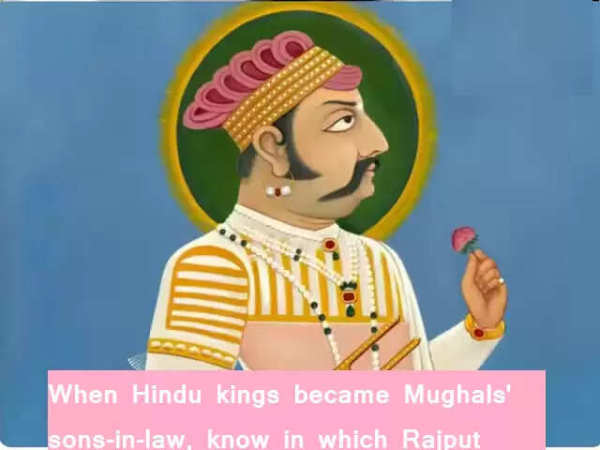
Highlights
The Mughal emperor Akbar was known for his progressive and inclusive policies, especially regarding religion. He maintained a tolerant approach toward Hindus, separating religion from governance and granting Hindus the freedom to practice their faith. His marriage alliances with Hindu princesses, such as Jodha Bai, who is believed to have been his chief queen, reflect this policy. However, beyond these alliances, history also records numerous instances of Hindu kings marrying Muslim princesses, fostering political alliances and treaties.
Historical records indicate that Akbar married his daughter, Shahzadi Khanam Begum, to Maharana Amar Singh of Mewar. Amar Singh, who ruled Mewar from 1597 to 1620, was the eldest son of Maharana Pratap and the grandson of Maharana Udai Singh II. This marriage served as a treaty after Akbar failed to conquer Mewar, as Amar Singh had launched successive attacks that forced the Mughal forces to retreat. After Maharana Pratap's death, Amar Singh ascended the throne and continued to defend Mewar's independence. He passed away on January 26, 1620.
Another significant historical event is the marriage of Kunwar Jagat Singh, son of Raja Man Singh of Amer, to Maryam, the daughter of Kutlu Khan, the Afghan governor of Orissa (now Odisha). In 1590, Raja Man Singh sent Kunwar Jagat Singh to suppress a rebellion by Afghan chiefs in Orissa. During the battle, Kunwar Jagat Singh was injured and taken care of by Maryam, who secretly nursed him back to health. Her dedication impressed Jagat Singh, and after the rebellion was subdued and Kutlu Khan’s son accepted Man Singh’s supremacy, the two were married. The novelist Bankim Chandra Chattopadhyay detailed this event in his work Durgeshnandini.
Rana Sanga, the celebrated ruler of Mewar, married Mehrunnisa, the daughter of a Muslim commander, as well as three other Muslim women. Rana Sanga, known for his military might, united the Rajput kingdoms and significantly expanded Mewar. He famously defeated Mughal emperor Babur’s forces at the Battle of Bayana before succumbing to his injuries in 1528.
Maharana Kumbha, known as one of the most formidable warriors of his time, also formed alliances through marriage. He wed the daughter of Jagirdar Wazir Khan. Kumbha’s legacy includes numerous military victories, such as his defeat of Sultan Mahmud Khilji of Malwa near Sarangpur in 1437. To commemorate this victory, he constructed the iconic Vijay Stambh in Chittor.
Raja Chhatrasal Bundela, a prominent Rajput ruler and warrior, married Ruhani Bai, the daughter of the Nizam of Hyderabad. Chhatrasal is renowned for defeating Mughal emperor Aurangzeb and establishing the independent Bundela kingdom in Bundelkhand.
Bappa Rawal, the founder of the Mewar dynasty, is another prominent figure in history. He is believed to have married the daughter of the Muslim ruler of Ghazni. Bappa Rawal’s reign (728–753) marked the beginning of the Guhil dynasty, which later gave rise to notable rulers like Rana Kumbha, Rana Sanga, and Maharana Pratap.
These historical marriages reflect the complex socio-political dynamics of the time. While they often served as strategies to secure alliances and treaties, they also highlight the interconnectedness of diverse cultures and traditions.